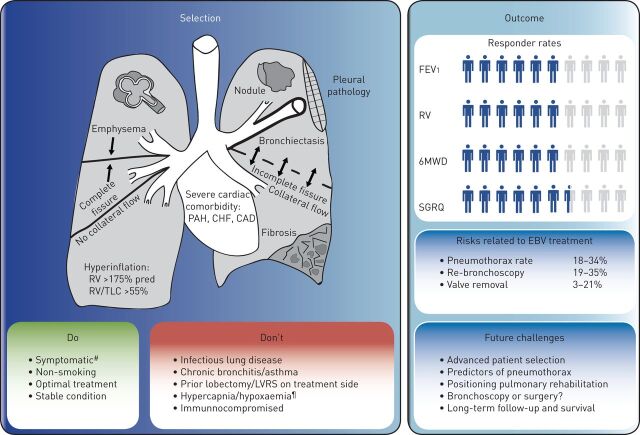FIGURE 1.
Endobronchial valve (EBV) treatment for emphysema, summary of treatment selection and outcome. The key selection criteria for success (do) and restraints for treatment (don't) are shown. The criteria for success (do) are: severe emphysema; complete interlobar fissure (no collateral flow); severe hyperinflation (residual volume (RV) >175% pred, RV/total lung capacity (TLC) >55%); symptomatic; non-smoking; on optimal treatment; and stable condition. The criteria for restraints (don't) are: presence of a suspect nodule; pleural pathology; severe bronchiectasis; incomplete fissure; fibrosis; severe cardiac comorbidity (i.e. pulmonary arterial hypertension (PAH), congestive heart failure (CHF) and coronary artery disease (CAD)); infectious lung disease; chronic bronchitis or asthma; prior lobectomy or lung volume reduction surgery (LVRS) on treatment side; hypercapnia/hypoxaemia; and immunocompromised. The figure also shows the mean responder rates and percentage of risk related to EBV treatment from the four published randomised controlled trials. Responder rates are the percentage of patients who reached the earlier established minimal important difference: forced expiratory volume in 1s (FEV1) ≥12% (STELVIO ≥10%), RV ≥430 mL (LIBERATE ≥310 mL), 6-min walk distance (6MWD) ≥25 m, St George's Respiratory Questionnaire (SGRQ) ≥4 points. #: modified Medical Research Council scale ≥2 or 100 m<6MWD<500 m; ¶: partial pressure of carbon dioxide >60 mmHg/partial pressure of oxygen <45 mmHg.

